Early Life and Online Ascent
Tom Dwan was born on July 30, 1986, in Edison, New Jersey. From an early age, he showed a strong affinity for logic-based games and strategy puzzles, but it wasn’t until his teenage years that he discovered poker—a game that would come to define his life. On his 17th birthday, using a $50 gift from his father, he created an account on an online poker site and began playing under the screen name “durrrr.” The alias itself was intended as a taunt, a lighthearted way of suggesting to opponents that they shouldn’t take him seriously—until it was too late.
What followed was one of the most meteoric rises in online poker history. Dwan quickly graduated from micro-stakes games to the highest levels available on the internet, showing a fearless, hyper-aggressive style that baffled many traditional players. By the time he was 23, he had turned his initial $50 into millions and become a household name in the online poker world.
His primary battleground was Full Tilt Poker, the leading high-stakes platform of the time. There, Dwan regularly competed against—and often outplayed—some of the most accomplished players in the game. His unorthodox moves, willingness to apply relentless pressure, and ability to make hero calls with seemingly marginal hands earned him both admiration and notoriety. While many viewed his style as reckless, seasoned observers recognized the deeper logic behind his decisions: Dwan wasn’t simply gambling—he was solving complex problems at lightning speed, using game theory and instinct in equal measure.
By the mid-2000s, “durrrr” was no longer just a funny screen name—it was a brand, and Tom Dwan was widely acknowledged as one of the most innovative and dangerous players in online poker.
Full Tilt Poker: Dominance at the Nosebleeds
By the late 2000s, Tom Dwan had cemented his reputation as the most electrifying force in online poker. Now in his early twenties, he was a fixture at Full Tilt Poker’s nosebleed stakes—tables where blinds of $200/$400, $500/$1,000, and even higher were routine. While most players treated these games with caution, Dwan embraced volatility. His sessions were marked by relentless aggression, creative bluffs, and massive pots that came to define an era.
Some of his most iconic clashes were against the giants of the time—Phil Ivey, Patrik Antonius, Ilari “Ziigmund” Sahamies, and Viktor “Isildur1” Blom. Each opponent posed a unique challenge, but Dwan’s style remained consistent: apply pressure, stay unpredictable, and trust his read. Against Antonius, he engaged in hours-long sessions featuring swings in the millions. Their battles became the stuff of legend—intensely competitive, yet always respectful.
However, his most memorable showdowns came against Isildur1 in late 2009. The mysterious Swedish phenom exploded onto Full Tilt Poker with hyper-aggressive play and a fearless willingness to challenge multiple legends at once. Dwan accepted the gauntlet head-on, engaging in a series of marathon sessions that quickly became the stuff of online poker folklore. During their most intense clashes, they played across up to six tables simultaneously, with six-figure pots flying back and forth—some of the largest ever seen online.
In one brutal stretch in November 2009, Isildur1 reportedly won over $5 million from Dwan across several high-stakes sessions—one of the most significant downswings ever recorded in online poker history. The magnitude of the loss stunned the community and marked a low point in Dwan’s meteoric rise.
Yet he didn’t stay down for long. Over the following weeks and into early 2010, Dwan managed to recover a substantial portion of the losses, reportedly winning back over $2.5 million in December alone. By April 2010, his all-time tracked online profits had surpassed $7 million, according to HighStakesDB—firmly establishing him as one of the most successful and resilient high-stakes cash game players of his generation.
Though Isildur1 ultimately came out ahead in their direct confrontations, the rivalry elevated both players to mythical status, symbolizing a golden era when fearless aggression, deep stacks, and pure intuition ruled the virtual felt.
Dwan’s approach was both admired and feared. He would 5-bet bluff with suited connectors, float flop bets with bottom pair, and turn hopeless-looking spots into brilliant bluffs or razor-thin value bets. His ability to induce mistakes from the world’s best made him a terrifying opponent and a fan favorite among poker enthusiasts.
This era represented the peak of online poker’s "golden age"—a time of unregulated action, unlimited stakes, and global attention. Dwan was more than a participant; he was the main attraction.
But the golden age didn’t last. On April 15, 2011, a day now known as Black Friday, the U.S. Department of Justice shut down Full Tilt Poker along with other major online poker sites. The platform’s financial mismanagement was exposed: player funds had been used to pay owners and cover shortfalls. Although Dwan was not part of Full Tilt’s ownership structure, his name and face were deeply tied to the brand.
In the aftermath, Dwan expressed public concern for affected players and distanced himself from the company’s leadership. The fall of Full Tilt marked the end of an era—for online poker, and for Dwan’s central role in it. But before the lights dimmed, Dwan had already left his mark on another stage—televised cash games and high-stakes challenges that would help define his legacy.
Live Poker and Television Fame
As Tom Dwan’s online legend grew, it was only a matter of time before he brought his talents to the live arena. While many feared that online aggression wouldn’t translate well to deep-stacked, face-to-face poker, Dwan shattered those doubts almost immediately. With the same fearlessness and creativity that defined his online play, he quickly made an impression in the high-stakes live scene.
His breakthrough came not in a single tournament, but on television—specifically on shows like Poker After Dark and High Stakes Poker. These programs were the pinnacle of televised cash game poker, drawing the biggest names and often featuring blinds of $300/$600 or higher. Dwan, barely in his twenties, sat down across from legends like Doyle Brunson, Phil Ivey, Barry Greenstein, and Eli Elezra—and played without an ounce of intimidation.
Viewers were captivated. Dwan bluffed with air, value-bet razor-thin margins, and made soul reads with uncanny precision. In one iconic hand against Greenstein and Peter Eastgate, Dwan pulled off a massive triple-barrel bluff with 7-high—an audacious move that instantly became one of the most replayed moments in televised poker history. In another, he called a river shove from Barry Greenstein holding just top pair on a scary board—after a long tank, he coolly said, “I call. Nice hand if you got it.” He didn’t.
What made Dwan so compelling wasn’t just his talent, but the composure with which he operated. While others engaged in table talk or theatrics, Dwan remained eerily calm. He barely celebrated wins, rarely showed emotion, and spoke only when necessary. This stoic presence, combined with his fearless decision-making, created an aura that made him must-watch TV.
Although he wasn’t a tournament specialist, Dwan also posted strong results in live events. In 2010, he finished second in the $1,500 No Limit Hold’em event at the WSOP, narrowly missing out on his first bracelet. Still, his fame didn’t rely on hardware—it came from the respect he earned from the best in the game.
By the early 2010s, Tom Dwan wasn’t just an online star—he was a global poker icon.
The Durrrr Challenge – Triumph and Controversy
In January 2009, Tom Dwan issued one of the boldest propositions in poker history: the Durrrr Challenge. “Heads-up challenge to the world,” he wrote, “open to anyone—except Phil Galfond.” The format was simple but audacious: four tables of No Limit Hold’em or Pot Limit Omaha at minimum $200/$400 stakes, played over 50,000 hands. Both players would post $500,000, and if Dwan lost, he would pay an extra $1 million. If he won, he’d keep his opponent’s half million—but regardless of the side bet, poker winnings from the hands played would also be kept.
“If I win $750k in poker, I get that plus your $500k. If I lose $750k, you get $2.25 million total.”
The challenge generated immediate buzz. Names like Phil Ivey, Patrik Antonius, David Benyamine, and the Dang brothers were floated as potential opponents. Ultimately, only Antonius officially accepted, and the match kicked off in February 2009, shortly after the Aussie Millions.
Played on dedicated Full Tilt Poker tables, the sessions were a spectacle. Thousands of fans railed the matches, watching Dwan and Antonius battle through swings and psychological brinkmanship. After a tight start, Dwan began to pull ahead. By the time they crossed the 25,000-hand mark, he had built a lead of nearly $700,000.
However, scheduling proved to be a challenge. Both players were deeply involved in the booming high-stakes ecosystem of the time and reluctant to commit their full focus. The pace slowed, and then in late 2009, a new force disrupted everything: Viktor “Isildur1” Blom.
The mysterious Swede shook the poker world by playing marathon sessions against its elite—including Dwan and Antonius. In one brutal stretch, Isildur1 won over $3 million from Dwan and another $1 million from Antonius. Their focus shifted from the challenge to containing the new threat.
By the time the dust settled, only 39,436 hands had been played—but Antonius conceded. Dwan finished $2,059,719 ahead, claiming both the profit and the side bet. The Durrrr Challenge, at least in its first iteration, had been a success.
Buoyed by the result, Dwan announced plans for more. He launched a second challenge against Dan “Jungleman” Cates, one of the sharpest heads-up players in the world. But this time, the story took a different turn.
The Jungleman match started in 2010. After 19,335 hands, Cates led by over $1.2 million. And then… it stalled. Months passed without further play. Years later, the match remained incomplete. Jungleman expressed public frustration, noting that penalty clauses had been included and hinting that Dwan owed compensation.
In 2017, Cates stated in an interview that he still hoped to complete the challenge, saying Dwan seemed more cooperative and that external pressures—not bad faith—had caused delays. Nonetheless, many in the poker community viewed Dwan’s silence as a blemish on his reputation.
The Durrrr Challenge stands today as both a monument and a cautionary tale: a moment when online poker’s confidence reached its peak, and when personality-driven spectacle elevated the game’s cultural status. Dwan’s victory over Antonius remains one of the most celebrated feats in online poker history. But the unfinished business with Jungleman still lingers—an open question in the legacy of one of poker’s most captivating figures.
The Fall of Full Tilt Poker
For years, Tom Dwan was one of the most visible and celebrated faces of Full Tilt Poker. Alongside legends like Phil Ivey and Patrik Antonius, he helped turn the site into the epicenter of online high-stakes action. Full Tilt wasn’t just a poker platform—it was a brand, a lifestyle, and a symbol of poker’s global boom. But on April 15, 2011, everything changed.
That day—now infamously known as Black Friday—the U.S. Department of Justice shut down the major online poker sites operating in the country, including Full Tilt. The move sent shockwaves through the poker world. But while PokerStars quickly made arrangements to refund player balances and continue operating abroad, Full Tilt’s internal problems came to light.
Investigations revealed that Full Tilt had failed to segregate player funds. While over $300 million in player balances were listed on paper, the company reportedly had only a fraction of that amount in liquid assets. Worse still, high-ranking figures within the company had allegedly withdrawn tens of millions of dollars in payments from player deposits, essentially operating the site like a Ponzi scheme. The result was devastating: thousands of players around the world were locked out of their accounts, unable to access their bankrolls.
Though Dwan was not part of Full Tilt’s ownership or management, his public association with the brand meant that his reputation came under scrutiny. He wore the Full Tilt logo in televised cash games, appeared in promotional materials, and had been one of the site’s most active high-stakes players. In the court of public opinion, separating his image from the company’s failures proved difficult.
In the immediate aftermath, Dwan expressed concern for affected players and distanced himself from the company’s executives. He was one of the few sponsored pros to speak publicly and urge accountability. While some fans defended him as merely a face of the platform, others questioned why he hadn’t been more vocal earlier.
The fallout marked the end of an era. Full Tilt never fully recovered its image, and the brand was eventually acquired by PokerStars in a $590 million settlement that included repaying player balances. For Dwan, the collapse meant more than losing a sponsor—it meant losing the arena where he had built his legend.
In the years that followed, he largely disappeared from public poker, retreating from online platforms and major televised events. But he didn’t stop playing. Instead, he turned his attention to a more secretive world—one where the games were even bigger, the opponents even wealthier, and the stakes unlike anything seen before.
The Macau High-Stakes Era
After Full Tilt Poker collapsed, Tom Dwan all but disappeared from the spotlight. While the poker world speculated about his whereabouts, insiders knew he hadn’t quit the game—he had simply moved it to a different level.
That level was Macau.
In the early 2010s, Macau became the global capital of ultra-high-stakes cash games. Behind the closed doors of VIP rooms in casinos like the StarWorld and Wynn, blinds reached HKD 10,000/20,000 (roughly $1,200/$2,400), and individual pots regularly climbed into the millions. Entry was by invitation only, and the atmosphere was unlike anything Dwan had faced before. Wealthy Chinese businessmen with near-infinite bankrolls faced off against a select few Western professionals brought in for their entertainment value and perceived willingness to gamble.
Tom Dwan quickly became one of the most prominent foreign pros in this world. His loose-aggressive style and calm demeanor fit the environment perfectly—he was respected, feared, and in high demand. Alongside names like Phil Ivey and Andrew Robl, Dwan became a regular in games that dwarfed anything seen in televised poker.
But with the stakes came shadows.
Unlike regulated tournaments or live-streamed games, Macau’s poker scene operated in a murky ecosystem where wealth, influence, and reputation mattered more than contracts or rules. Over time, whispers began to circulate—some claiming that Dwan had enjoyed extraordinary upswings, others suggesting he had lost tens of millions. According to persistent rumors, some of these losses may have occurred under questionable conditions.
There were allegations—never officially confirmed—that powerful behind-the-scenes figures controlled the games and that certain Western players who won significant sums against local whales were denied payment. Others claimed that some games were influenced by criminal organizations, particularly Chinese triads with long-standing ties to Macau’s gambling underworld. Lending schemes, intimidation, and "soft pressure" were all part of the unspoken rulebook.
While Dwan was never directly implicated in any wrongdoing, his prolonged silence and deep integration into this opaque environment only added to the intrigue. In some versions of the story, he was a huge winner. In others, he was buried under debts, the victim of games he couldn’t walk away from—whether due to financial loss, social obligation, or something more dangerous.
The truth may never be fully known. But what is clear is that Macau changed Tom Dwan. He went in as a fearless icon of the online era and emerged as a quieter, more private, more elusive version of himself—one forged in a world where the stakes weren’t just financial, but personal.
Return to the Spotlight – Triton, Legacy, and the New Era
After years of relative silence, Tom Dwan began to re-emerge on the international poker stage in the late 2010s. His return wasn’t marked by flashy announcements or social media hype—it was quiet, almost tentative. But for poker fans who had followed his meteoric rise, sudden disappearance, and whispered Macau saga, the reappearance felt like the return of a myth.
One of the key venues for this comeback was the Triton Super High Roller Series, a prestigious tour designed for the world’s wealthiest players and elite pros. The Triton events—hosted in cities like Manila, London, and Jeju—offered the kind of stakes and structure that suited Dwan perfectly: deep stacks, selective fields, and massive prize pools.
It didn’t take long for the cameras to find him again. Dwan's presence at Triton final tables reignited interest in his game. He was older now, more measured in demeanor, but the core elements were still there: calm under pressure, unorthodox lines, and that unmistakable ability to make brilliant reads in high-leverage spots. Fans praised his return, noting that in an era increasingly dominated by solver-based strategies, GTO charts, and emotionless decision trees, Dwan’s intuitive, feel-based game was a refreshing reminder of poker’s artistic side.
But the contrast was undeniable.
Where once Dwan had been the face of youthful aggression and forward-thinking poker, now he stood opposite a new generation—players who had grown up in the solver era, with technical precision and regimented study routines. In Triton broadcasts, Dwan was often seen engaging with these younger pros, sometimes visibly skeptical of their robotic styles, other times curious and respectful. The game had evolved, and while Dwan hadn’t fully embraced the modern framework, he wasn’t resisting it either—just navigating it on his own terms.
Media coverage was mixed. Some heralded his return as the rekindling of a legend. Others questioned whether he could keep up in today’s hyper-competitive environment. And still, the old rumors lingered—unpaid debts, unfinished matches, unspoken chapters from Macau. Dwan, as always, offered little comment. He simply played.
Beyond Triton, he made appearances on High Stakes Poker and Poker After Dark, reuniting with familiar faces from the golden era. The nostalgia was palpable—but so was the tension. Dwan was no longer the fearless upstart challenging the establishment. He was now a bridge between eras, carrying the weight of both his triumphs and unfinished business.
To some, he remains poker’s ultimate “what if?” A generational talent whose trajectory was interrupted by scandal, private games, and personal withdrawal. To others, he’s a cult figure—a symbol of raw talent, courage, and independence in a game that increasingly favors conformity.
Whatever the verdict, one thing is certain: when Tom Dwan takes a seat, people still watch. And that, in a world full of solvers, spreadsheets, and simulators, may be the rarest skill of all.
Debt Allegations and Ambassador Role
While Tom Dwan has gradually returned to the public eye through high-stakes events and televised games, his name continues to surface in discussions surrounding unresolved debts—an issue that has cast a persistent shadow over his later career.
Multiple high-stakes players have suggested, either publicly or behind the scenes, that Dwan owes substantial sums related to private games, staking arrangements, or unpaid credit extended during nosebleed sessions. Among the most outspoken has been Dan “Jungleman” Cates, who not only expressed frustration about the unfinished Durrrr Challenge, but also hinted at broader financial obligations. Other respected pros, such as Peter Jetten and Haralabos Voulgaris, have echoed concerns—some even questioning the ethics of giving Dwan high-profile roles in the poker industry while debts remain allegedly unpaid.
Despite these ongoing allegations, Dwan has stepped back into the spotlight with a new official partnership. In March 2024, he was announced as the newest ambassador for ACR Poker (Americas Cardroom)—an offshore online poker site operating under Costa Rican and Curaçao jurisdiction, known for serving U.S. players outside of official regulation.
As part of his ambassador role, Dwan hosts Durrrr’s Game, a regularly streamed high-stakes show featuring creative formats and well-known opponents. ACR has positioned Dwan as both a legend of the game and a central figure in reviving high-stakes entertainment online.
The partnership has drawn mixed reactions.
For fans, it’s a long-awaited return of one of poker’s most iconic figures. For critics, it’s a problematic endorsement—especially considering ACR’s regulatory ambiguity and Dwan’s unresolved financial controversies. Some argue that promoting a semi-anonymous offshore site with a polarizing figure at the helm sends the wrong message in an era where transparency and accountability matter more than ever.
While Dwan continues to participate in Triton events and other high-roller series, ACR Poker now represents his most visible and formal role in the poker ecosystem. And once again, he finds himself at the intersection of admiration and scrutiny—a talented but divisive figure navigating a game that has changed as much as he has.
Poker Legacy
Tom Dwan’s legacy in the world of poker is anything but simple. For some, he is the fearless prodigy who changed how high-stakes No Limit Hold’em was played—an innovator whose aggression, creativity, and psychological edge revolutionized the modern game. For others, he is a cautionary figure: a once-in-a-generation talent whose career became clouded by unfinished challenges, unpaid debts, and long absences from the public stage.
His early dominance in online cash games, especially on Full Tilt Poker, defined a generation of players. He was the first to make playing deep-stacked six-max and heads-up games feel like a form of art—balancing raw aggression with surgical precision. His appearances on High Stakes Poker and Poker After Dark created some of the most iconic hands in televised poker history. Even when he lost, he was captivating. Even when he was wrong, he was unpredictable.
Then came the disappearance. The Full Tilt collapse, the mystery of Macau, the stalled Durrrr Challenge. His silence in those years became part of the myth. Did he go broke? Was he trapped in a private game ecosystem governed by shadowy forces? Or did he simply choose privacy and escape from a poker world increasingly shaped by solvers and branding?
Dwan’s more recent years, including his return as an ACR Poker ambassador and his appearances in Triton events, reflect a new phase—one where the legend still flickers, but where the game, and its audience, have changed. His intuitive, feel-based style is no longer the apex of technical mastery, but his ability to play the player remains as sharp as ever. He may not be chasing bracelets or topping GTO leaderboards, but when Tom Dwan enters a room, people still watch. He still matters.
Ultimately, Tom Dwan represents both poker’s past and its enduring mystique. He is a bridge between eras: the golden age of online anarchy and the current age of analytics; the fearless kid from New Jersey and the reserved man navigating poker’s most exclusive circles.
His story is unfinished. And maybe that’s the point.

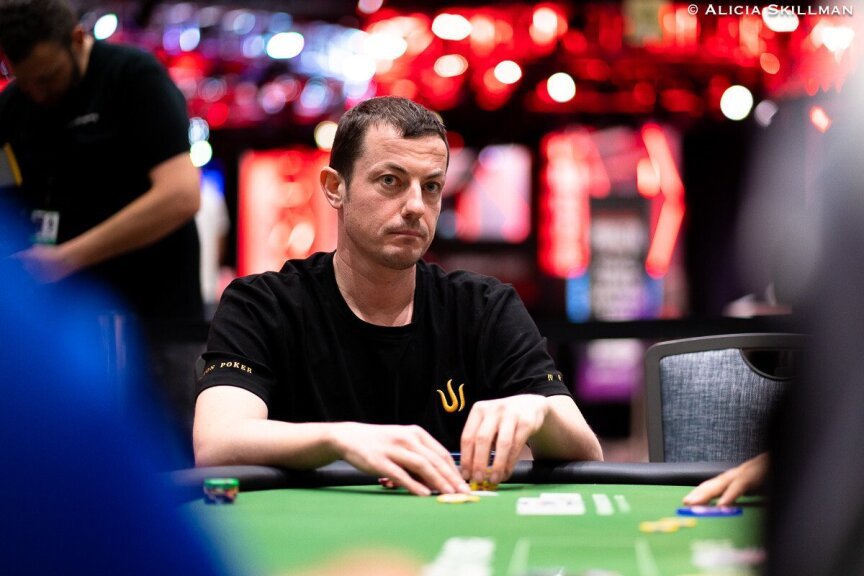
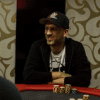
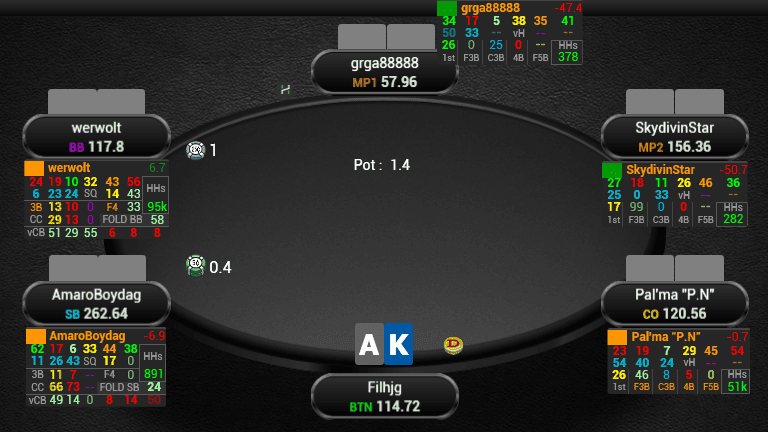
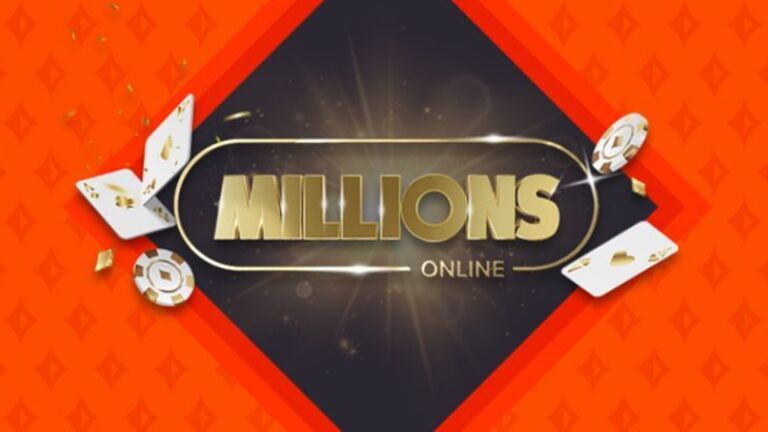
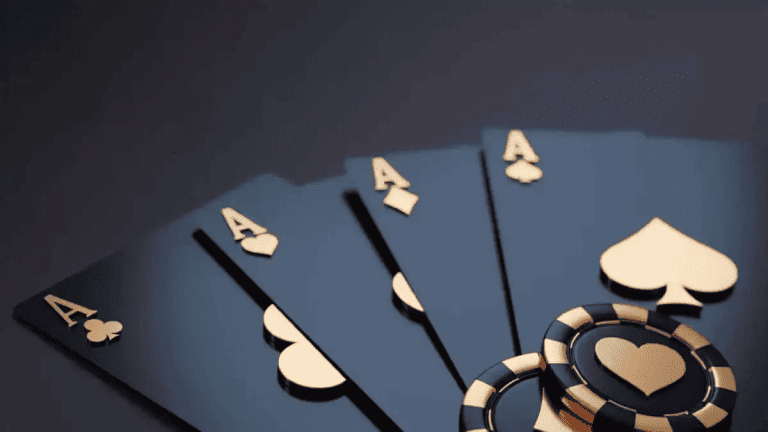











0 comments